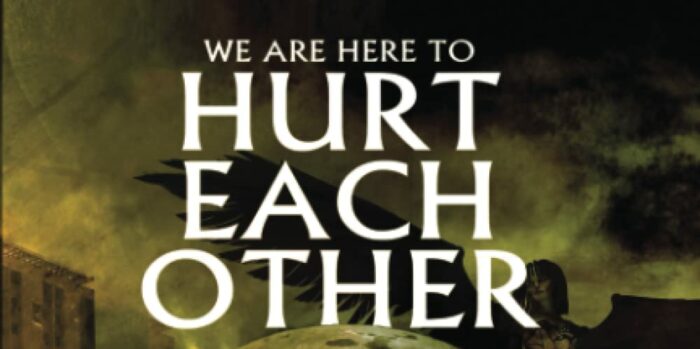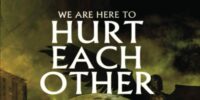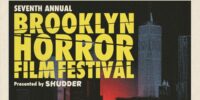Paula D. Ashe is a Hellraiser obsessive, educator, and award-winning writer of dark fiction. Her phenomenal debut short story collection, We Are Here to Hurt Each Other, was published by Nictitating Book in February 2022. I picked up the collection this summer and, after being blown away by her uncompromising and nuanced approach to horror writing, was delighted when she agreed to speak with me. We talked over email about her process, her influences, and the vision behind her work.

Saskia Nislow: Can you briefly introduce yourself and your work?
Paula D. Ashe: Sure thing! Before doing so though, I just want to take a moment to thank you Saskia, for taking the time to read my work and for asking such insightful questions! I’m
Paula D. Ashe (she/her) and I’m the author of the short story collection, We Are Here to Hurt Each Other from Nictitating Books. I write dark, transgressive, queer, inclusive horror fiction. I also write creative nonfiction, poetry, and scholarly essays.
SN: At what age did you first become interested in horror? What was the gateway story, image, or idea that first sparked your interest in the genre?
Paula D. Ashe: My earliest horror memory is of begging my mom to let me watch A Nightmare on Elm Street when I was five. Whatever I saw in the trailer or on a poster or however I was exposed to it struck something in me. She made me hide under a blanket the whole time, and I was so scared that even now (some thirty-plus years later) if I’m feeling very stressed out, Freddy waits for me in my dreams.
SN: As a reader, what kind of horror stories are you drawn to? Who are some of the writers, artists, and filmmakers that inspire your work?
Paula D. Ashe: I like upsetting truths wrapped in carefully and gorgeously written passages. I’m inspired by more folks than I can mention here, but for We Are Here to Hurt Each Other I can say it was Pascal Laugier, Gemma Files, Elizabeth Massie, Zin E. Rocklyn, Clive Barker, Matthew Bartlett, Diamandas Galás, Thomas Ligotti, Satoshi Kon, and Nic Pizzolatto.
SN: When did you first know that the stories in We Are Here to Hurt Each Other were going to be a collection? Did you write the stories already knowing that they would be linked or did that come out as you were already working on individual pieces?
Paula D. Ashe: I think Sean Thompson contacted me in 2019 (?) about putting a collection together for Nictitating Books and at the time I had been publishing in anthos and magazines for about ten years. Honestly, I didn’t know the stories were linked (or at least I didn’t intend for it) until I had several under my belt. I was nervous about linking them but I also felt it was compelling and dangerous; it (to me) gives the stories a heft beyond the narratives themselves. I’m only ‘reporting’ on the things I know, but these characters seem like they’re up to so much more than what’s been revealed to me. And there’s a lot more to come.
SN: Which story do you feel best captures the overall thesis or through-line of the collection and why?
Paula D. Ashe: The title of the collection comes from the story “All the Hellish Cruelties of Heaven” and as wild and fantastic (in the cosmic sense) as that story is, it really is the thrust of the collection (for better or worse). We’re going to hurt each other, even when we don’t want to or mean to, it’s going to happen.

SN: Many of the stories in your collection focus on pretty harrowing family dynamics, particularly parent-child relationships. If you feel comfortable talking about it, how has being a parent informed the way you develop and process these ideas?
Paula D. Ashe: The most harrowing stories for me (“Bereft,” “The Mother of All Monsters,” and “Because You Watched”) were all written before I became a parent. And those stories (the last two aforementioned, in particular) were me dealing with the anxieties of potential parenthood. Being responsible for a whole ass human is terrifying in ways I can’t explain. Not just the material stuff, but the existential stuff. I’m not an antinatalist, but they make some solid points. “Telesignatures from a Future Corpse” was SO hard for me to write because my kid is the same age as the kid in the story (at that time). I won’t spoil anything but completing that novelette was one of the most excruciating things I’ve done.
SN: I was interested in the way you handled the concept of harm in these stories, particularly how you frame it as an almost neutral, indifferent force. In nearly all of your stories, characters elude easy categories like “abuser,” “victim,” “monster,” and “innocent” and instead are shown to be capable of both enduring and perpetuating harm. In your outro, you reflect on how difficult it is to stop and recognize the relentless violence that surrounds us, much less acknowledge our own complicity in this violence. If We Are Here to Hurt Each Other forces the reader to face the cycles of harm they experience and participate in, what insights do you hope readers might take away from this experience?
Paula D. Ashe: Oof, there’s so much and it’s all a lot of contradiction! I hope that people experience empathy, that people recognize that we can all become monsters under the ‘right’ circumstances, that ‘the personal is political’ and the political is personal, that sometimes our monstrous selves are the best part of who we are, that violence isn’t always the answer…but that it also depends on the question.
SN: Related to the last question, one of my absolute favorites from this collection was “Bereft,” which is a stunningly courageous piece that dives into more than one major taboo. Did you have any trepidation about publishing this story? What was the editing process like and what helped give you the confidence to share this piece with the world? And do you have any advice for writers working on similarly controversial material?
Paula D. Ashe: It always shocks me when people say that about “Bereft.” Of everything I’ve written, it’s the story that’s been rejected the most. It’s a story that goes too far for some folks but it is—ironically—based on real events (not my own). I think it was one of the last stories I sent to Sean because in all honesty, I was ashamed of it. It’s almost too true in places (and I don’t say that to toot my own horn), and I think it makes a lot of people deeply uncomfortable, but it’s meant to. Look at any sexual abuse ‘scandal’ or incident and you’ll find several if not dozens of people who clearly knew what was happening and did nothing. I worried that people would think I was advocating or endorsing that sort of violence, but it’s a necessary story. Sean asked me to tone down the beginning (originally, the story opens with a graphic depiction of sexual abuse) and I was a little hesitant at first, but the story is definitely stronger because of his editorial work. I think besides Sean’s feedback because I had shared the story with some other writer friends years ago, they were all shook but they understood what the story was about and why it needed to be told.
Look at any sexual abuse ‘scandal’ or incident and you’ll find several if not dozens of people who clearly knew what was happening and did nothing. I worried that people would think I was advocating or endorsing that sort of violence, but it’s a necessary story.
Since its publication in the collection, a number of people have reached out to me personally to tell me that it has helped them heal, that it changed them (positively), that it made them and their experiences feel seen and validated. So I feel like I (somehow) did it ‘right’ because those are the people I write for. As far as other people telling controversial stories, you have to strike a difficult balance between honesty, compassion, and fearlessness. It’s a risk and you might f*ck up. You might get dragged. Writing “Bereft” hurt but (again) it was supposed to. Every ‘depraved’ action in “Bereft” has a reason, not to justify or excuse it, but to explore the relationship between personal suffering and intentional abuse. Again, this is not forgiveness culture bullsh*t because I hate that and don’t agree with it at all. And I’d never tell anyone to ‘forgive’ their abusers or ‘forget’ what was done to them. But I think recognizing that an abuser had a reason outside of you as a person can (hopefully) offer some catharsis. It has certainly helped me (sometimes).
SN: What scares you in real life?
Paula D. Ashe: Oh gosh, everything! Teeth, faces, too many holes in one place, clowns, death, people…you name it I’m probably afraid of it.
Thanks again to Paula for agreeing to speak with me and for providing such thoughtful and thought-provoking answers to my questions. It was an honor (and a delight) to have a chance to pick your brain! My review of We Are Here to Hurt Each Other is up on Horror Obsessive. You can find your own copy of the book on Amazon (run, don’t walk) and Paula can be found on Twitter at @pauladashe.



